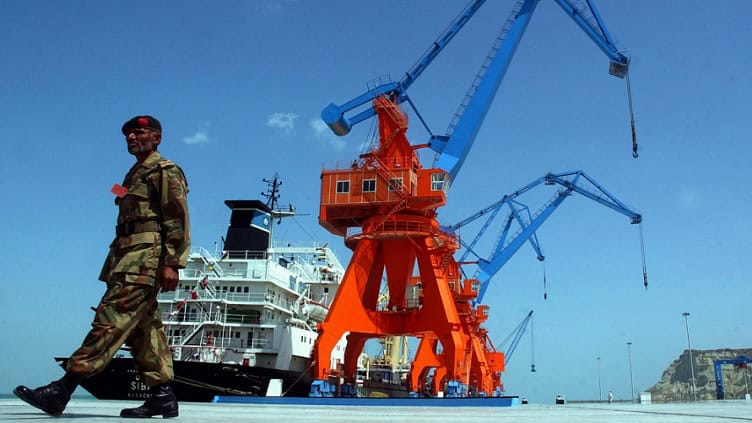The China Pakistan Economic Corridor (CPEC) is the topic of national discourse every few days, however, it misses out on the crucial details, explaining the public how they can benefit from it. The discussion mostly centers around the politics of it, without explaining the key aspects that help address Pakistan’s key national problems. In this article, I argue how instead of focusing on what’s China’s interest in initiating CPEC and the Belt and Road Initiative (BRI), Pakistan must focus on taking advantage of the CPEC plan to solve its own national issues.
CPEC is a three part plan, investing in Pakistan on priority basis in three separate sectors, Infrastructure, Agriculture and Energy. The investment plan started from $46 billion initially, however, has since expanded to over $65 billion.
First and foremost, CPEC started off as an infrastructure development scheme (even though it is now much more than that). The CPEC investment allows Pakistan to build and upgrade its road and rail network throughout the country, connecting areas to the national mainstream that were previously considered remote (for example, areas in Gilgit Baltistan, and Balochistan). The connectivity is vital for Pakistan. Despite Pakistan having a population of over 200 million, the potential of economic growth the size of population brings, remains largely un-utilized.
The connectivity, offered by CPEC offers Pakistan a chance to connect the entire population (even the ones living in remote areas) to national mainstream and increase its market size. The increased market size ultimately helps Pakistani manufacturers to increasing their sales, growing their businesses and ultimately increasing their chances of targeting international markets. The larger market size also attracts foreign direct investment from international players (other than China), something that the Pakistani government has been working to promote for a while.
The increased connectivity offered by CPEC, also helps Pakistan address its issue of National Cohesion. Pakistan faces a severe problem within its ethnic fault-lines, which is only aggravated by poor connectivity. Lack of connectivity creates low interaction between different ethnicities of Pakistan, for example, the urban Punjabis rarely ever have a chance interacting with Pashtuns and Balochs living in frontier regions. This disallows both from learning from each other, exchanging ideas, which only creates distances between them.
The global community now considers national cohesion as important to the development of a country as economic prosperity, since the lack of national cohesion can also become perfect grounds for foreign interference in creating instability and promoting separatism within a country. Connecting the people, and promoting interaction between different segments of society will only help reduce the ethnic tensions within Pakistan. For that to work, our policymakers will have to be thinking along these lines and prioritising such steps.
The second part of CPEC investment deals with Agricultural Technology. Pakistan is still primarily an agricultural economy, which means, the main mode of earning for Pakistan is still to produce and export. The foreign exchange Pakistan earns from exporting its produce helps it finance its domestic development projects, including roads/bridges, health and education, as well as import products for its domestic needs. However, Pakistan remains the lowest in ranking for agricultural yield per area globally. Combine that with rising water scarcity, Pakistan is spending a high amount of resources on low amount of yield. Considering how important the agriculture sector is to Pakistan’s survival, use of technology to reform and boost its produce should be the top priority for Pakistan.
This is where CPEC investment arrives, offering Pakistan a chance to solve its chronic problem. The plan offers Pakistan technology sharing and development to help boost its yield as well as produce higher amount of crops with a lower amount of water. Fixing the agriculture sector in Pakistan improves Pakistan’s earning potential, essentially helping Pakistan invest more in health, education and poverty alleviation. Combine higher agricultural yield with connectivity, and CPEC offers Pakistan a chance to solve its food security problem as well; only if Pakistan realises its a problem and intends to fix it.
Food security is defined as the availability of food and a person’s access to it. So if a country has ample food for its population, however, a part of the population does not have easy access to that food, it’s a problem that the country needs to fix. Agriculture technology allowing Pakistan to produce surplus food, combined with infrastructure connecting remote areas to national mainstream, Pakistan will have a unique opportunity to solve its food security problem if it is to fully utilise the potential of CPEC investment.
Last part of CPEC investment deals with Pakistan’s energy sector. Pakistan’s energy shortage has been crippling for the country’s economy in the past. Even though the situation has improved, there is still much more that needs to be done for the current and future energy needs. The energy shortage in the country is considered a bottleneck. No matter the capacity of country’s industry, the industry is unable to operate at an optimal level due to unavailability of energy. This ultimately costs Pakistan’s economic growth potential.
Chinese investment in Pakistan’s energy sector can allow Pakistan to become self-sufficient and self-reliant in the energy sector. Instead of relying on imported fuel for energy production, the CPEC investment aims to develop self-reliant, coal, nuclear and hydropower plants. The investment further helps Pakistan in the extraction of coal reserves to power the country’s coal power plants. Even though coal brings a host of environmental challenges, it is the best medium-term fix for the country, until it develops its solar and wind-powered plants.
The surplus of energy, combined with a large market connected in every part as well as ample availability of food, make Pakistan an ideal destination for future foreign investment in various fields, and a hub for future economic activity. However, in order to position Pakistan on that pedestal, its policymakers will have to realise the potential CPEC investment brings and utilise it through proper planning and policy making.
CPEC helps Pakistan solve its connectivity, national cohesion, food security, agricultural yield and energy shortage problems, however, to ensure these problems are fixed, Pakistan will have to understand and work towards these goals, rather than believing in conspiracy theories and searching for quick fixes. It is not termed game changer for nothing, however, the ball is in Pakistan’s court now, and it must act quick.














